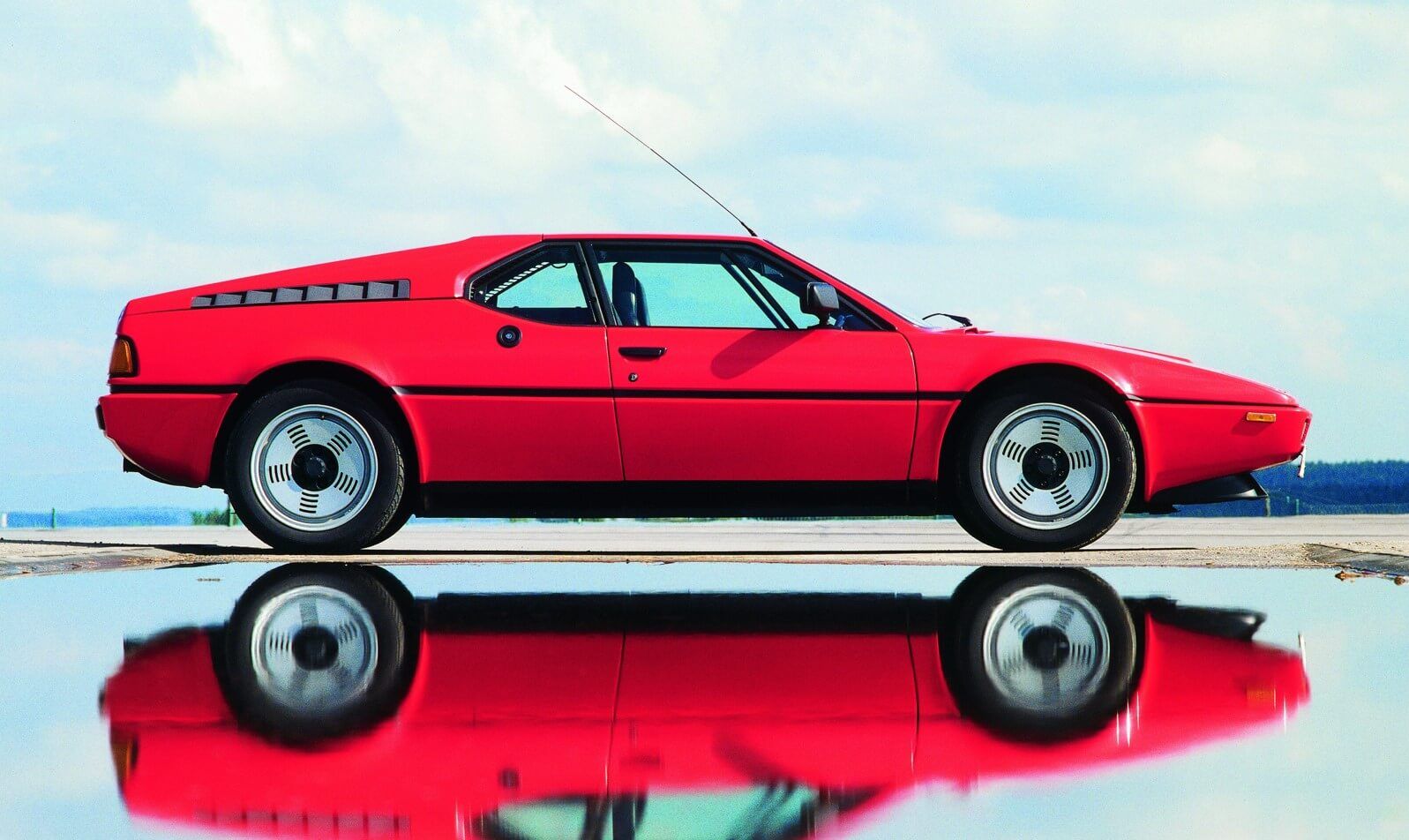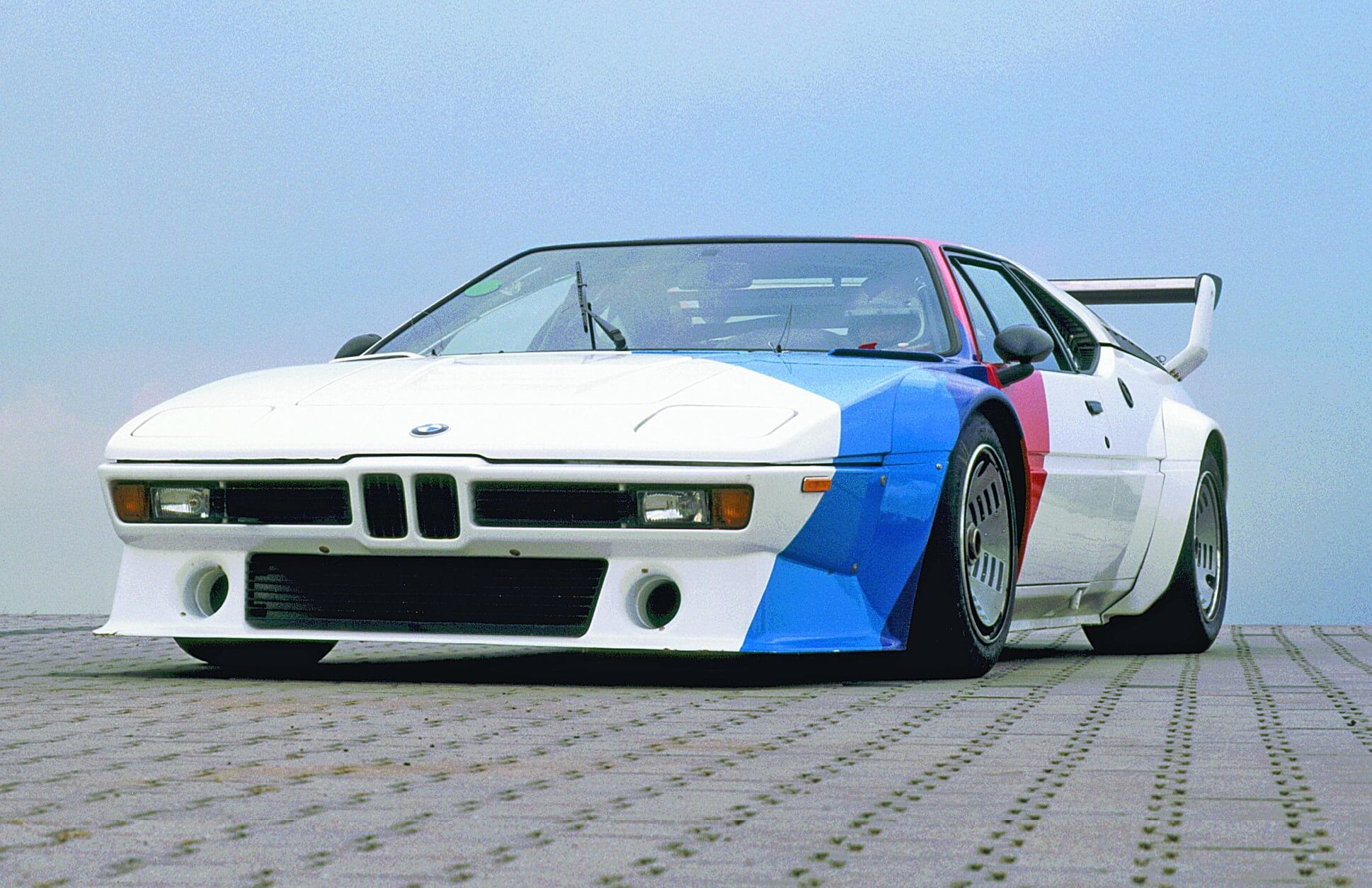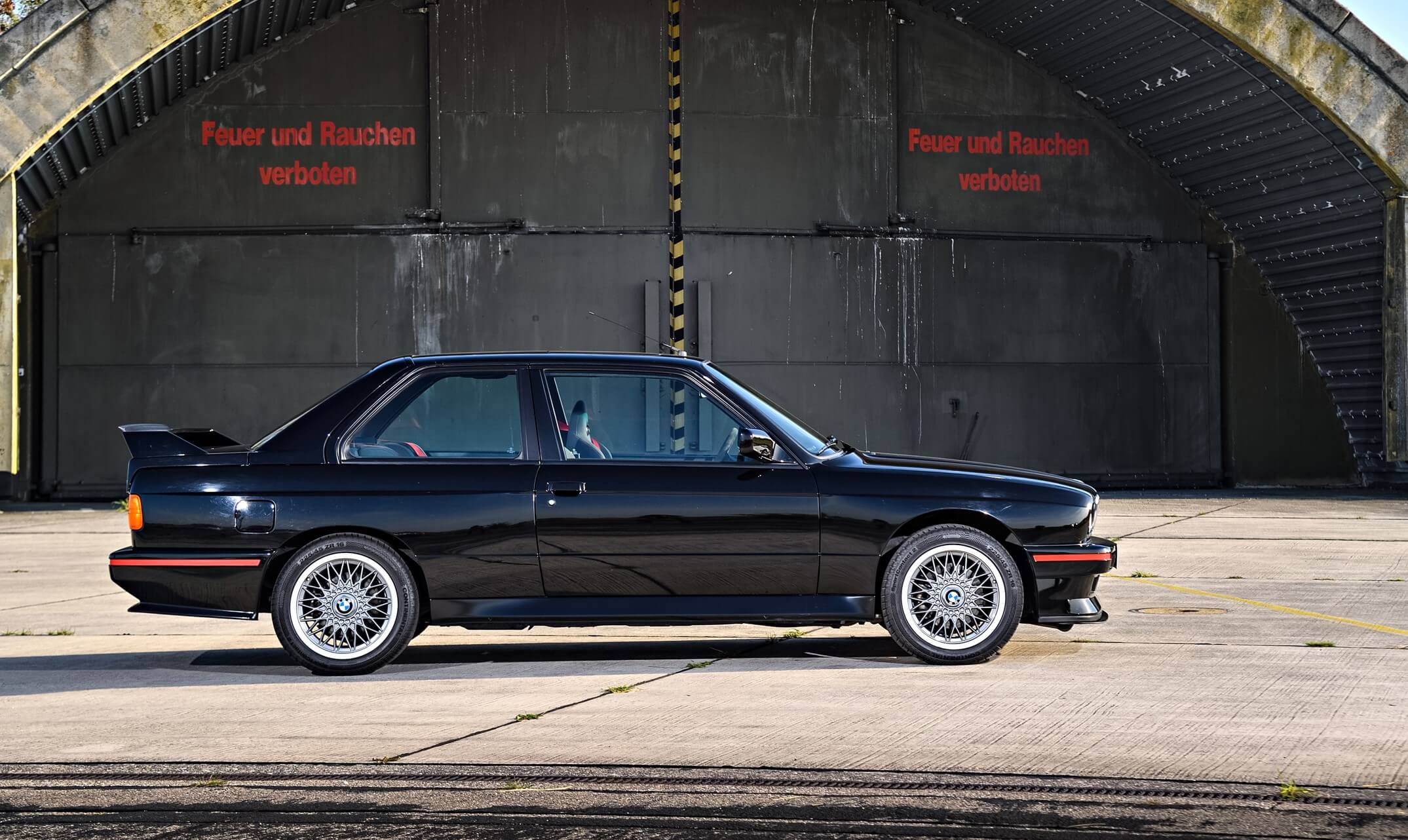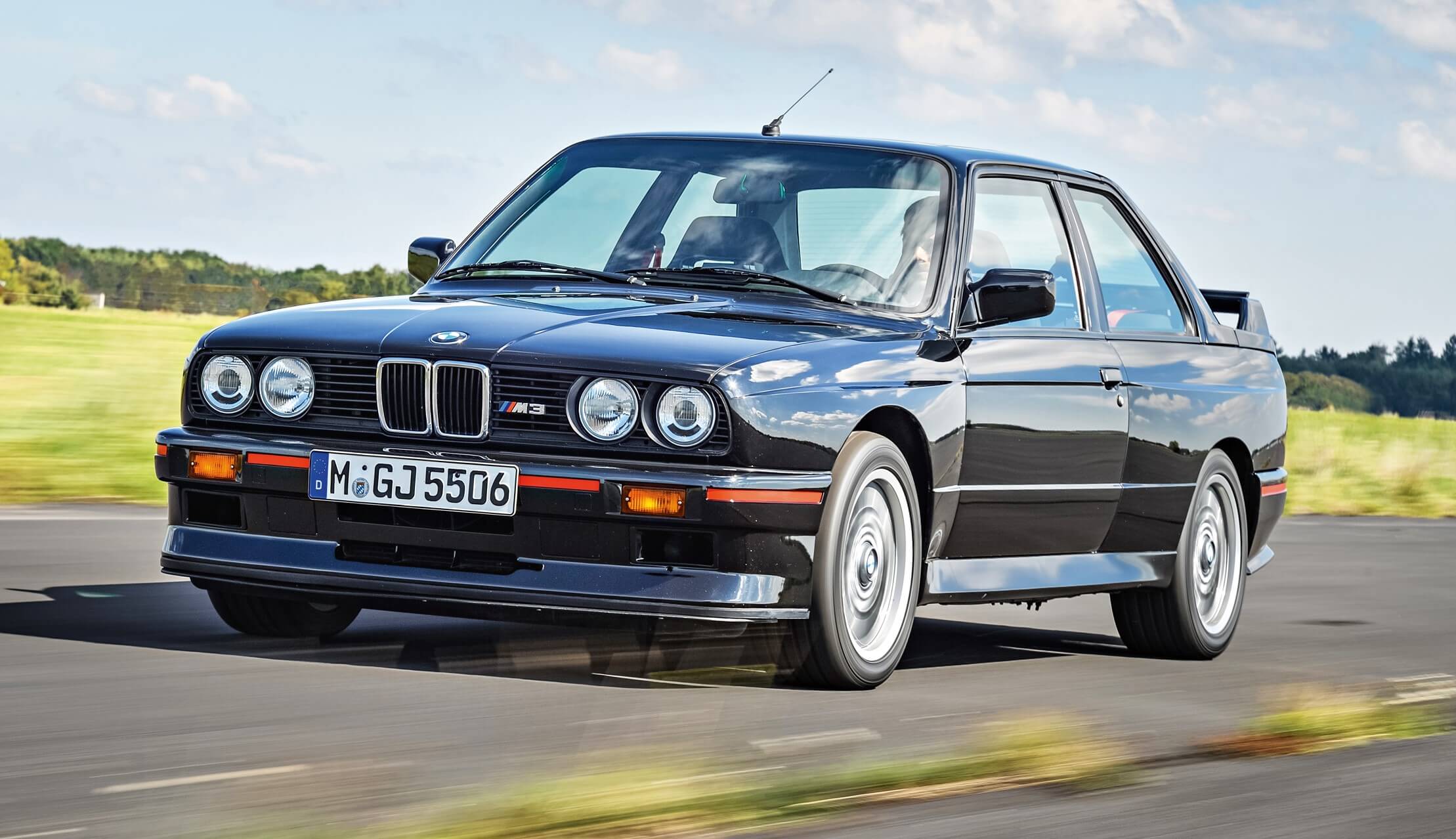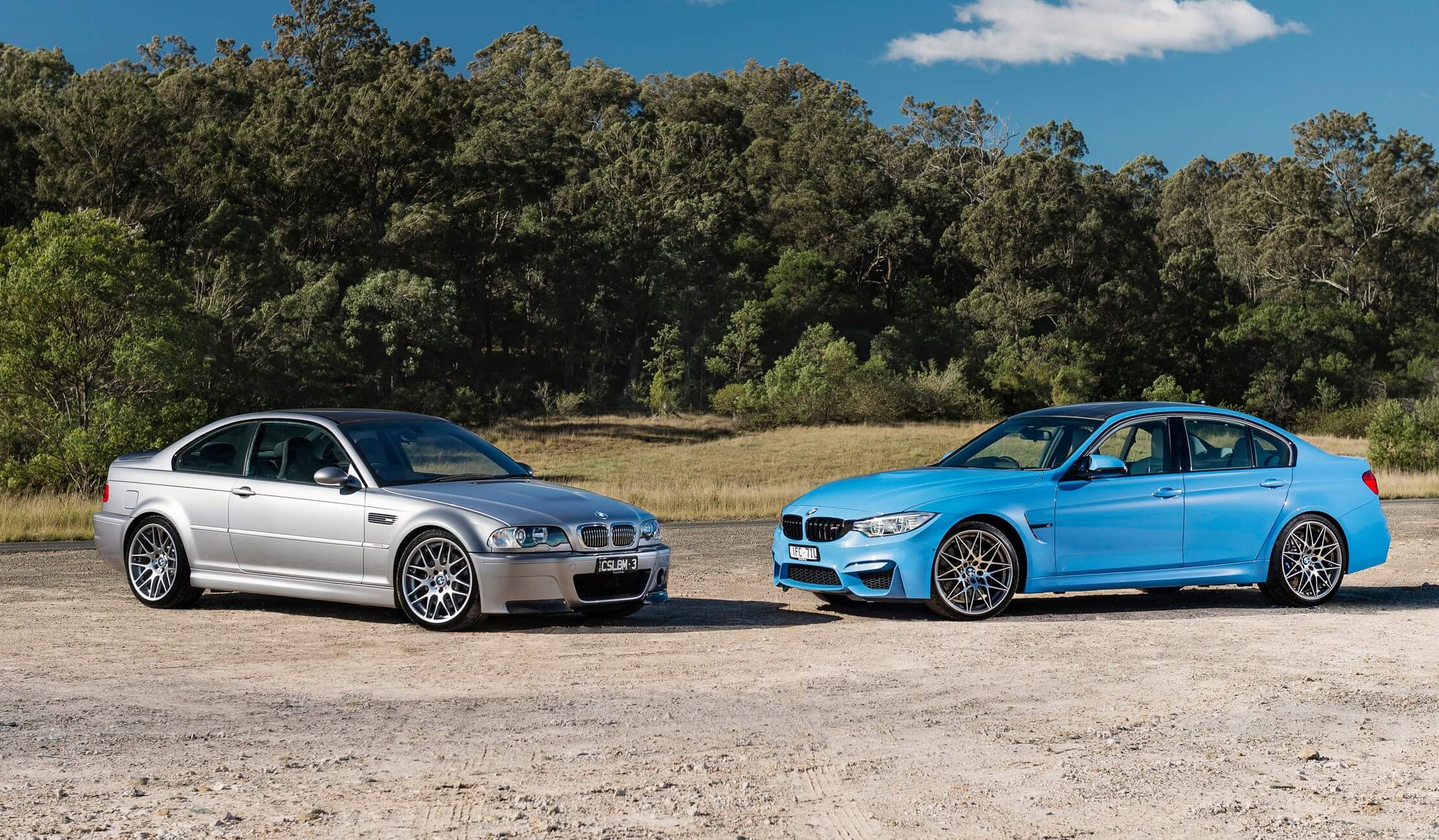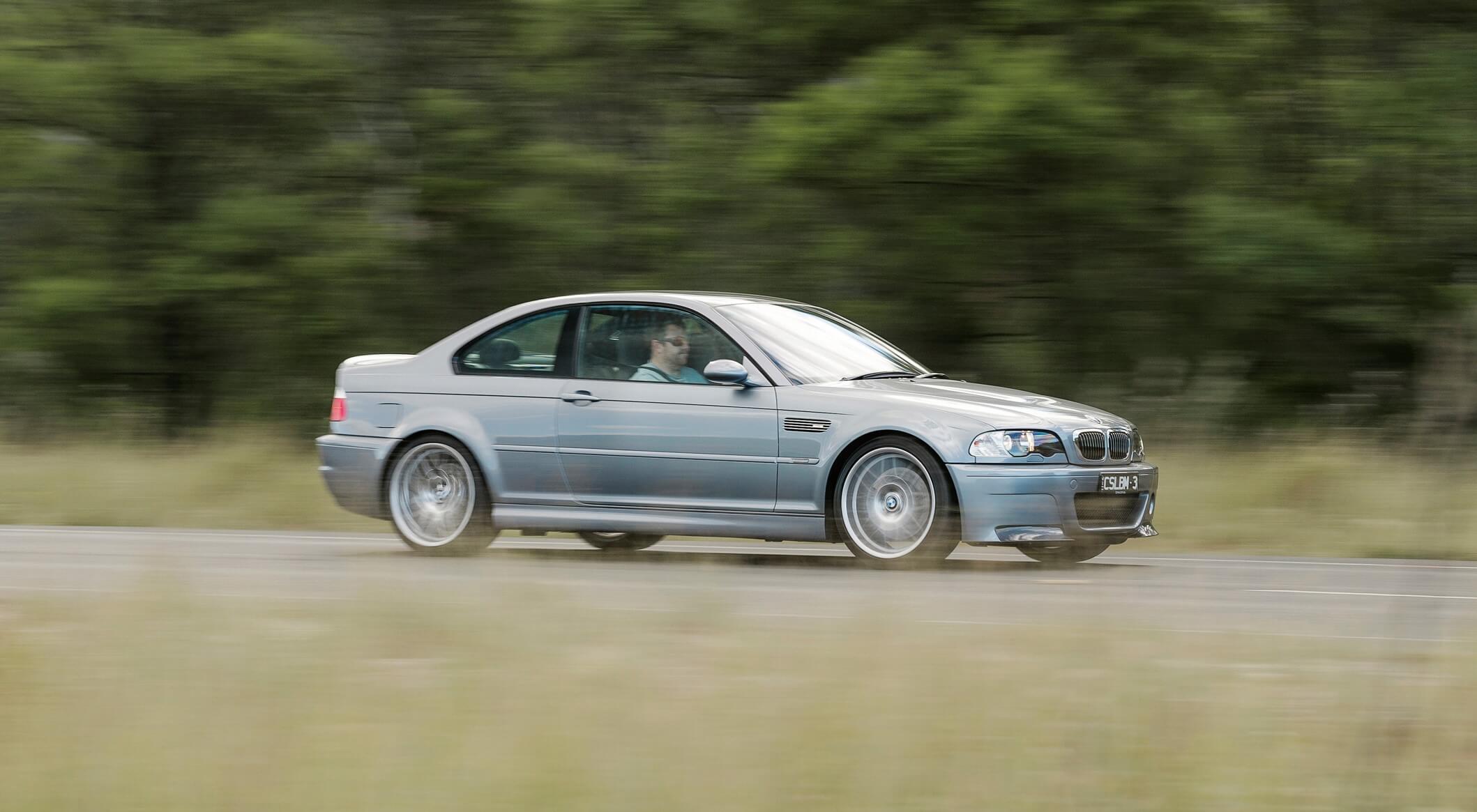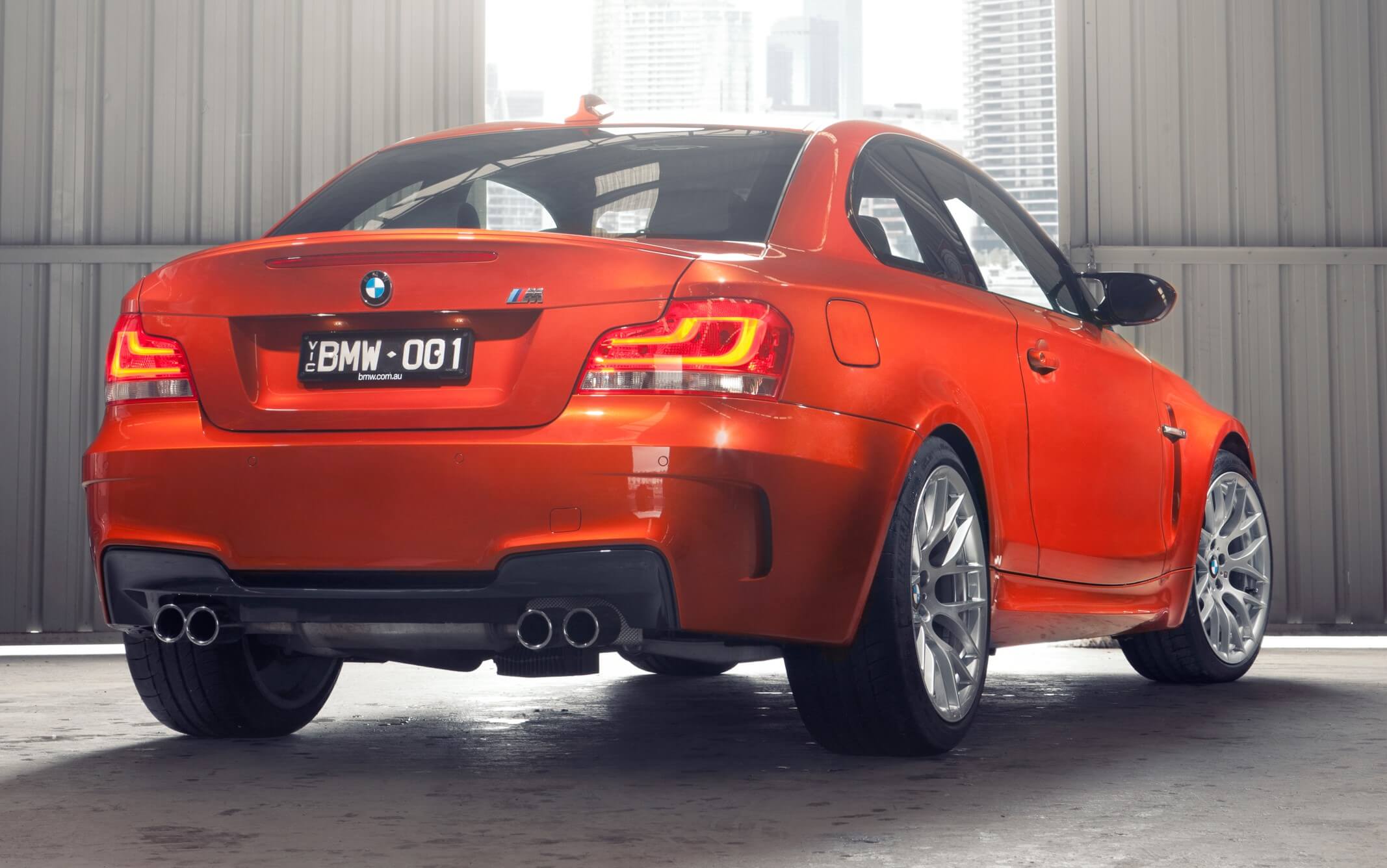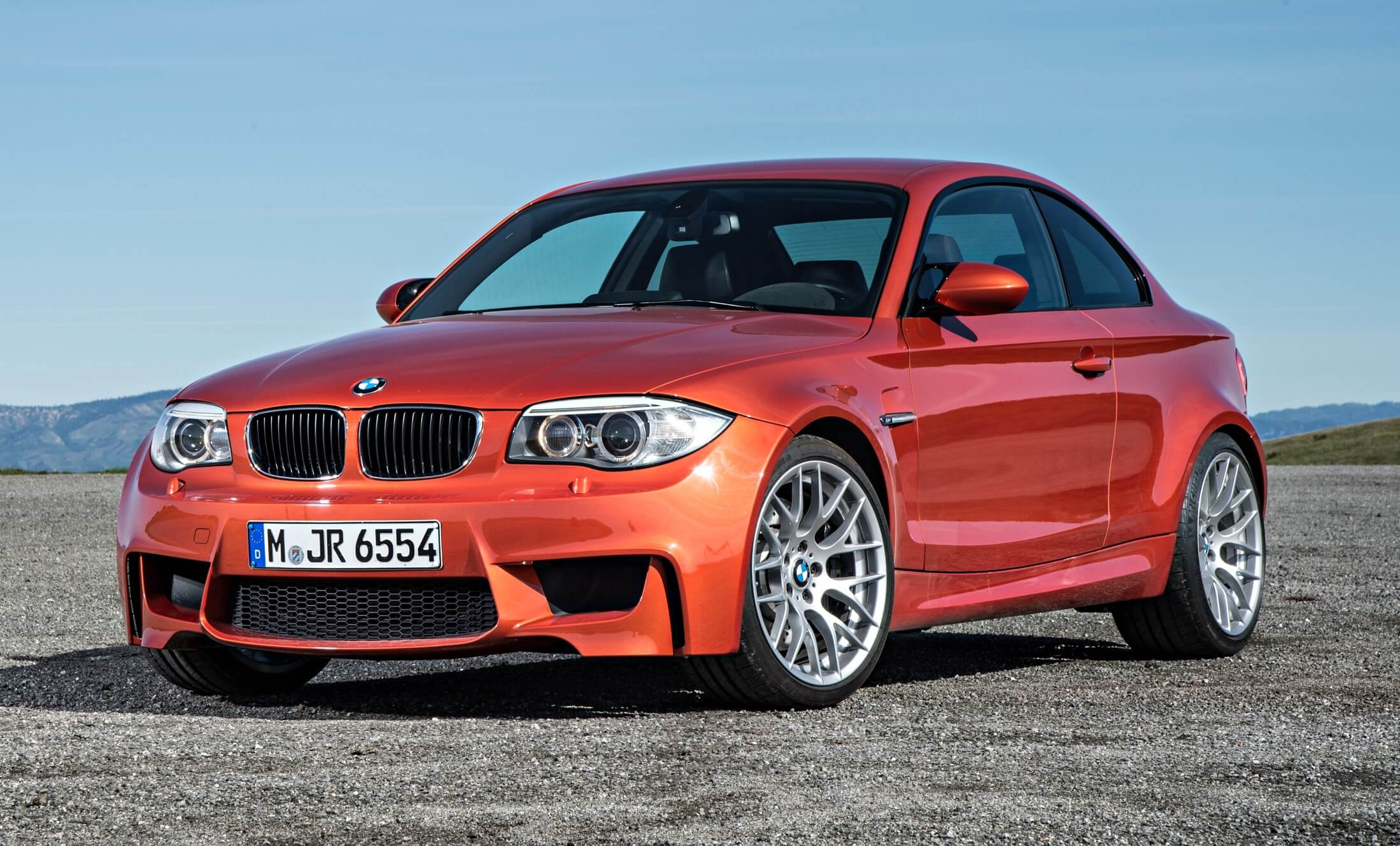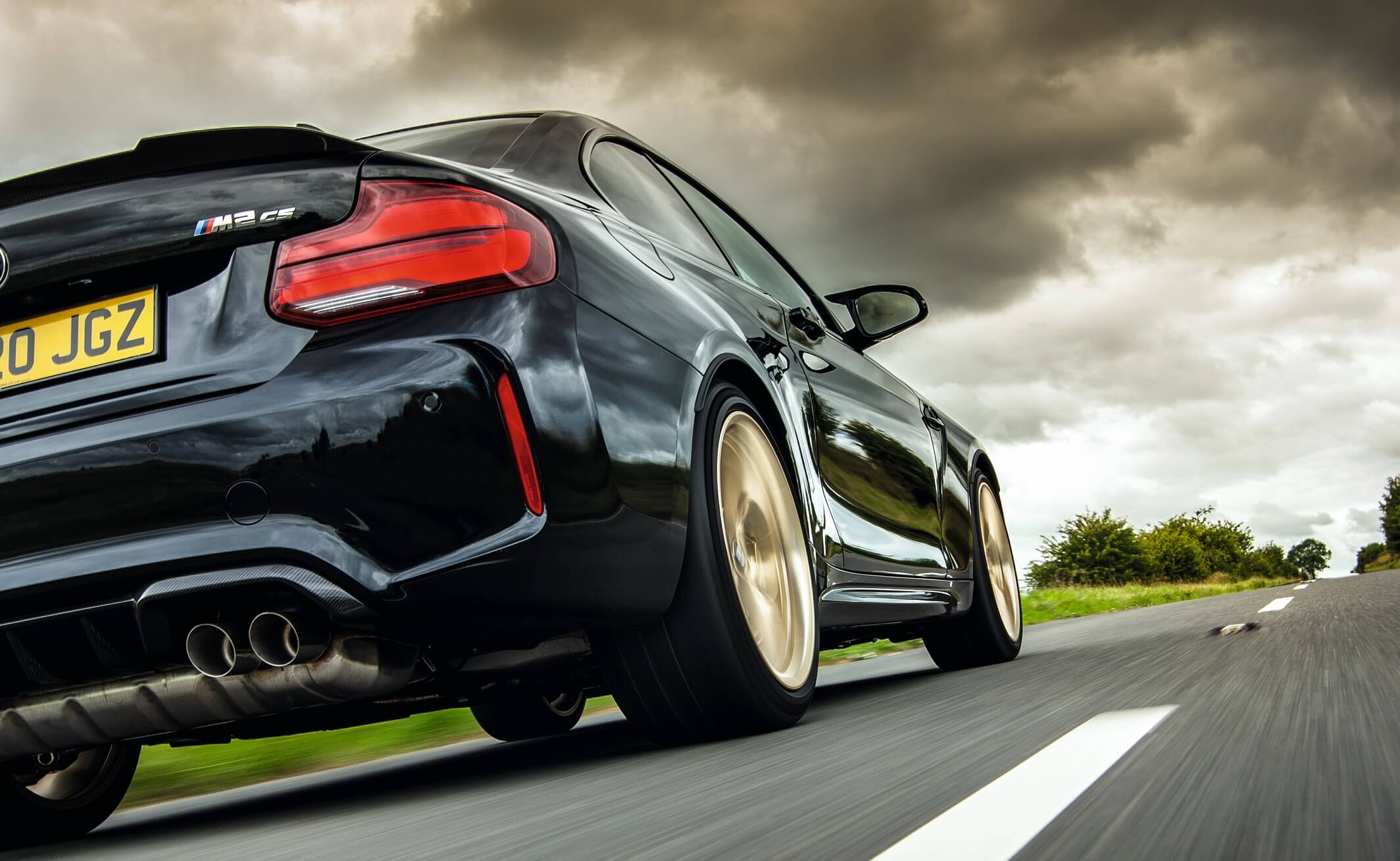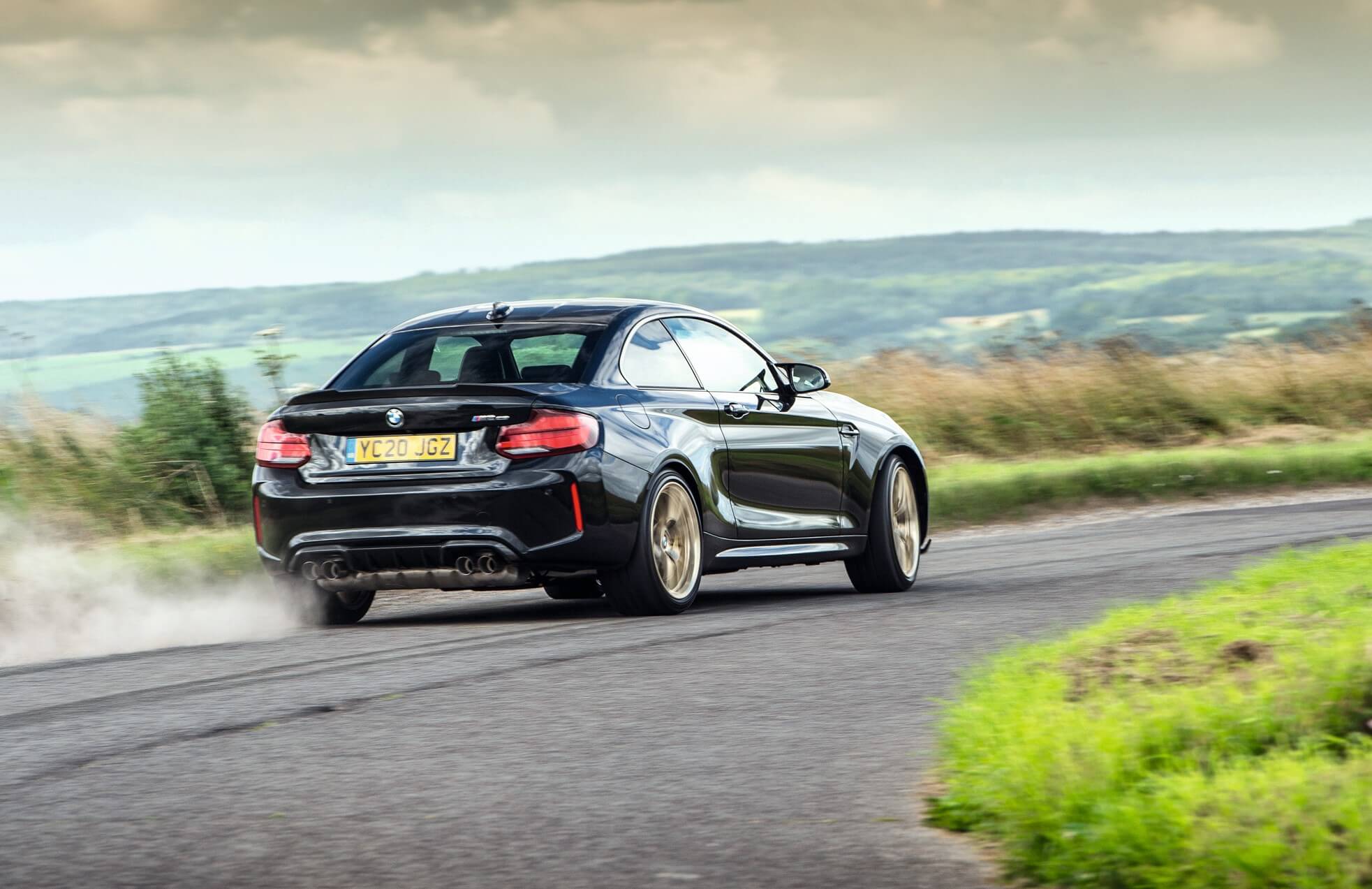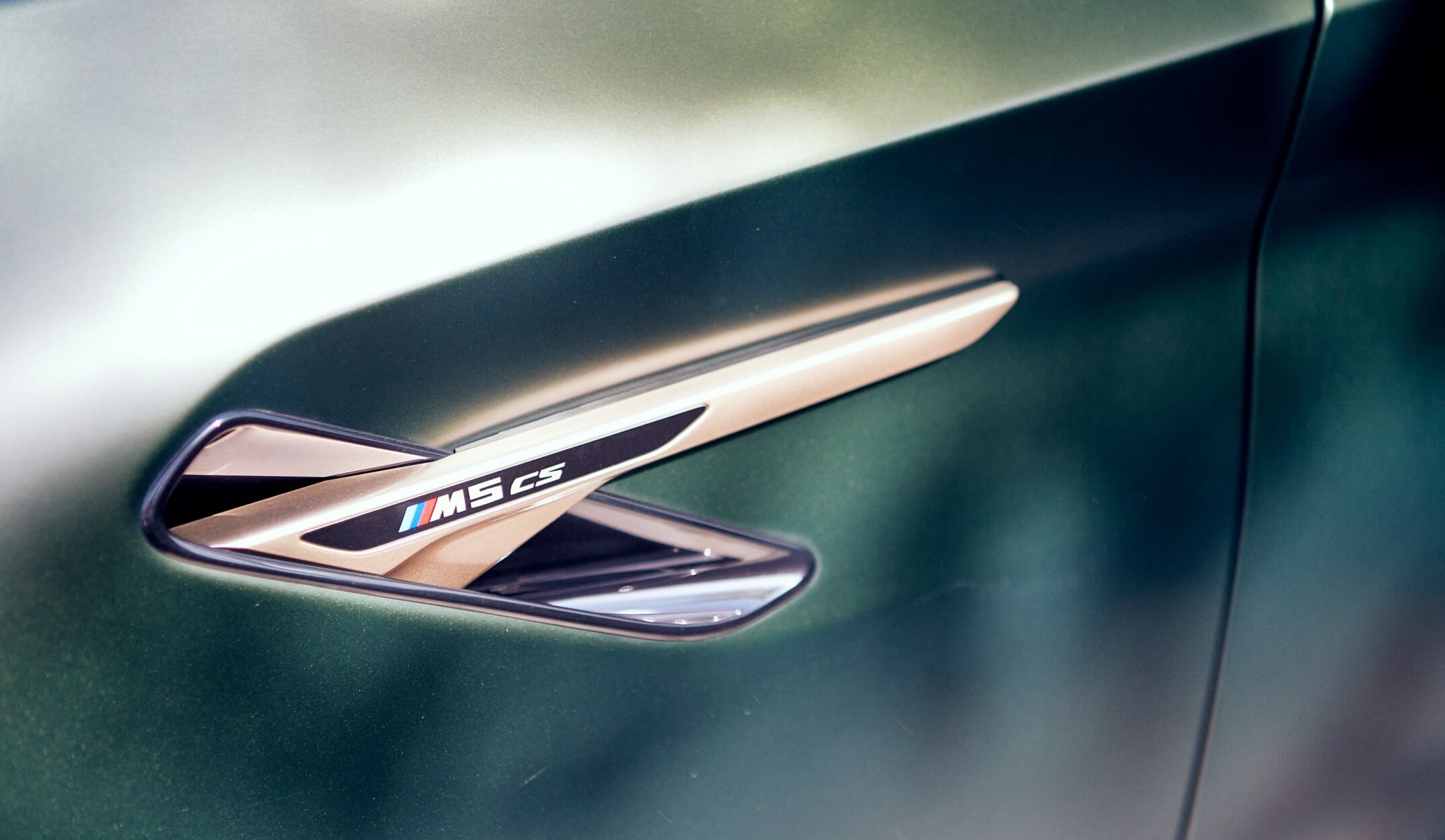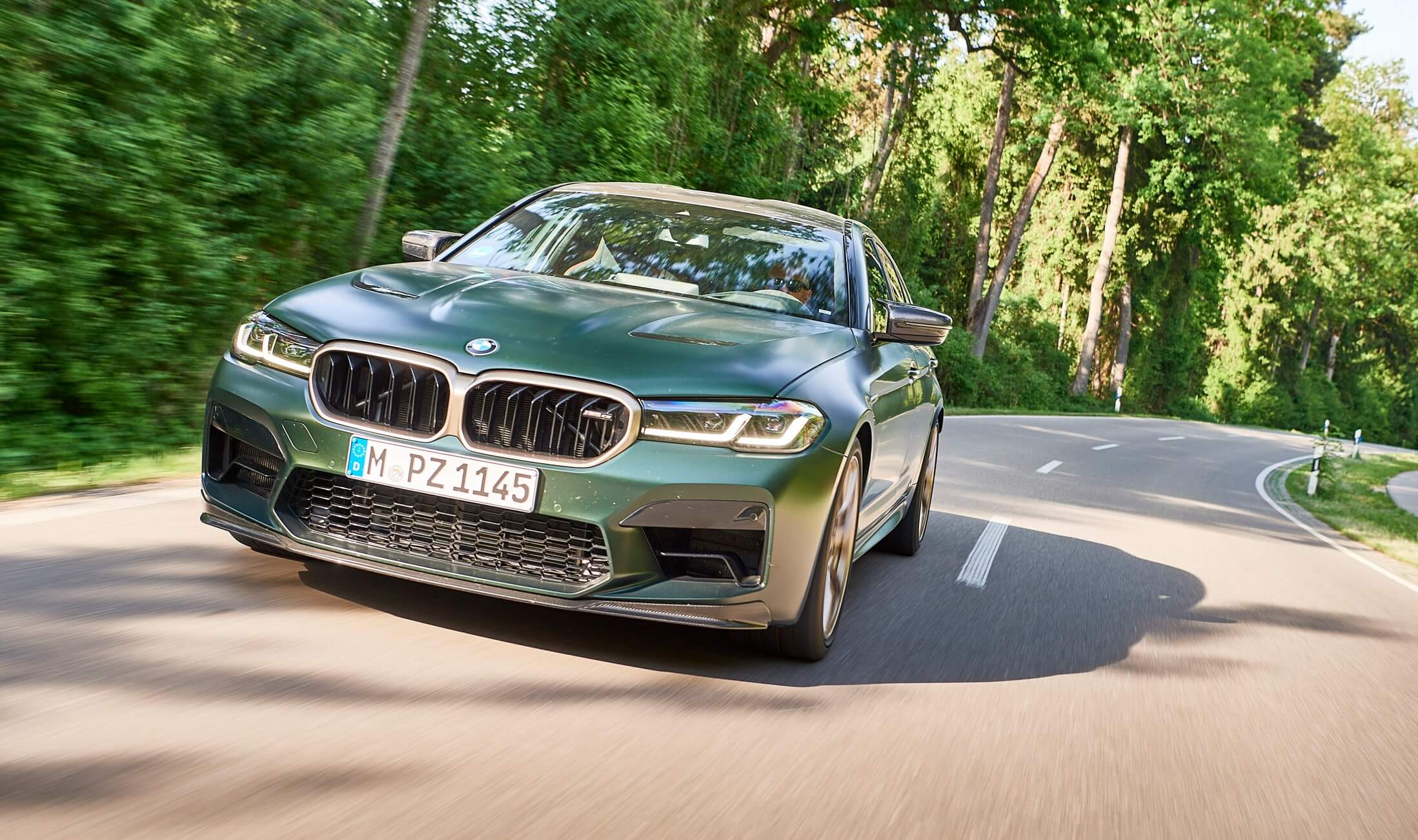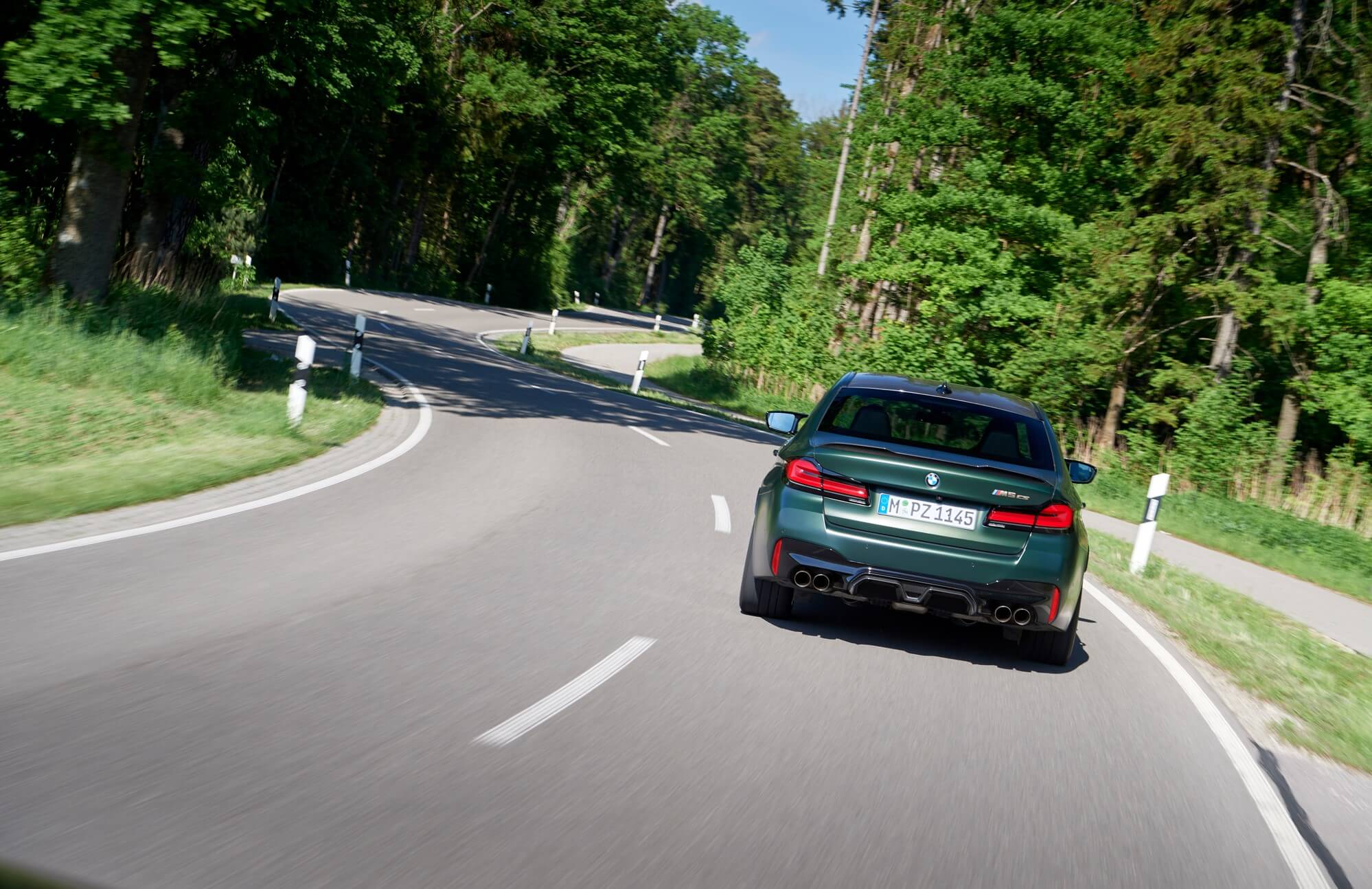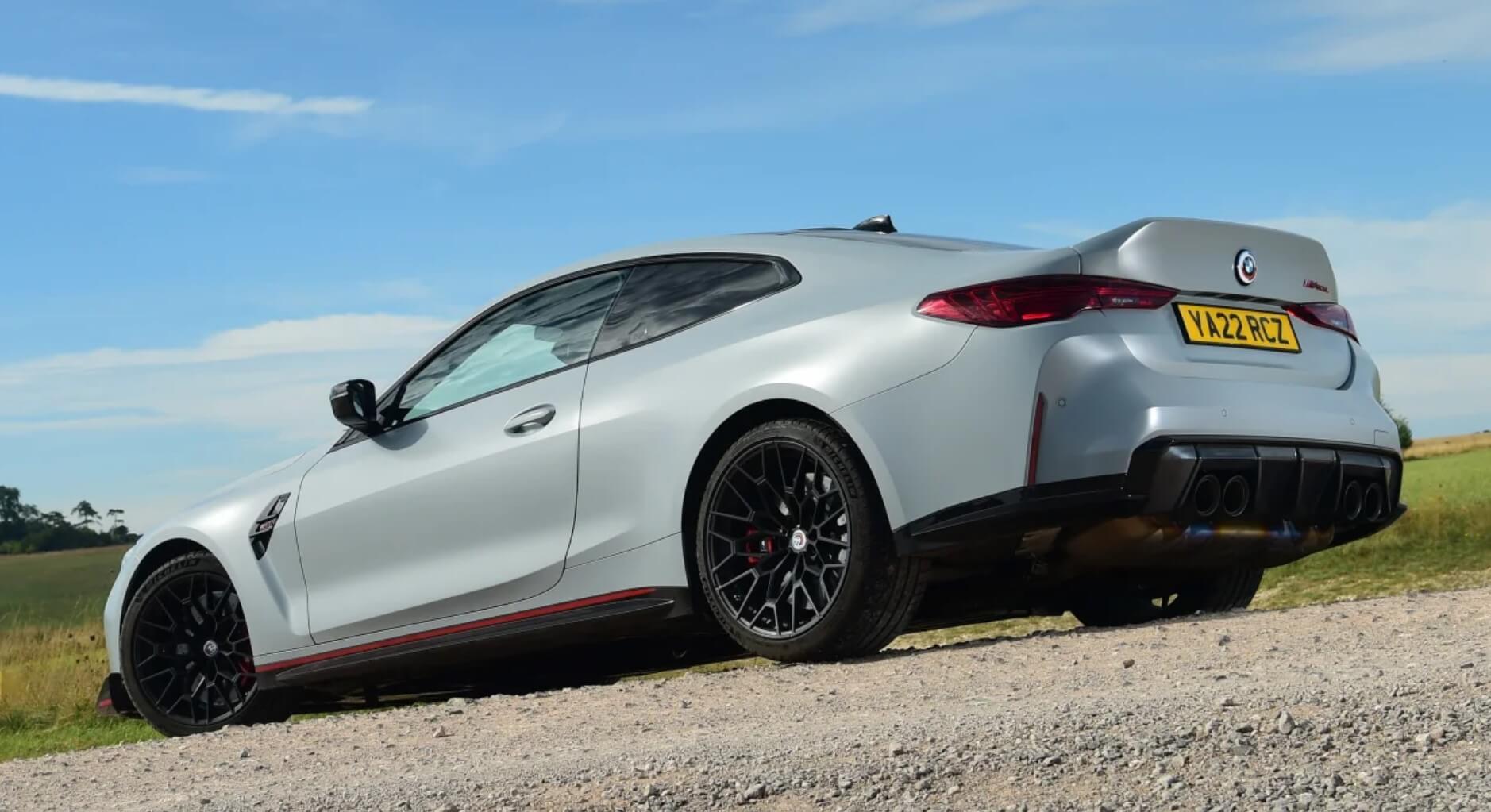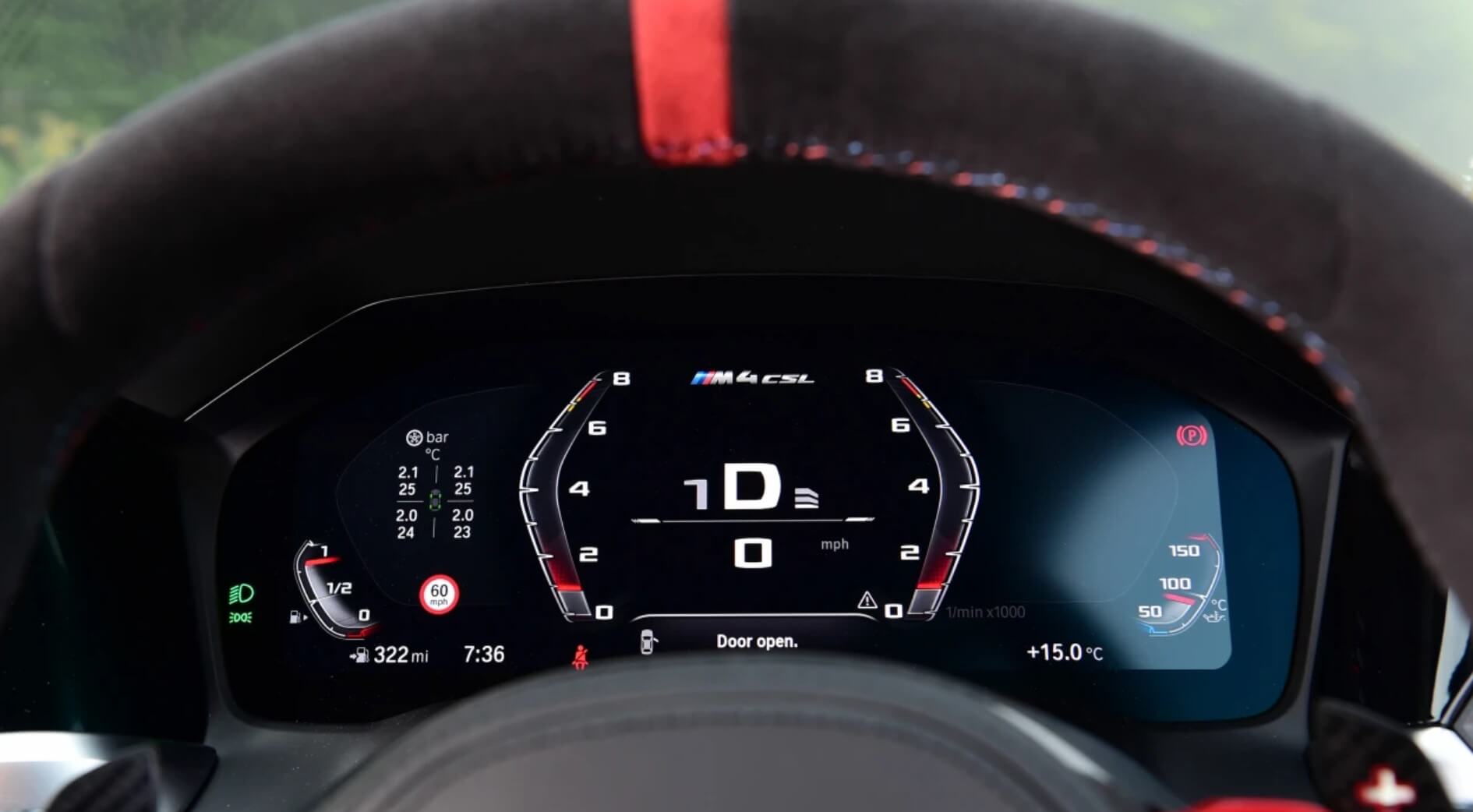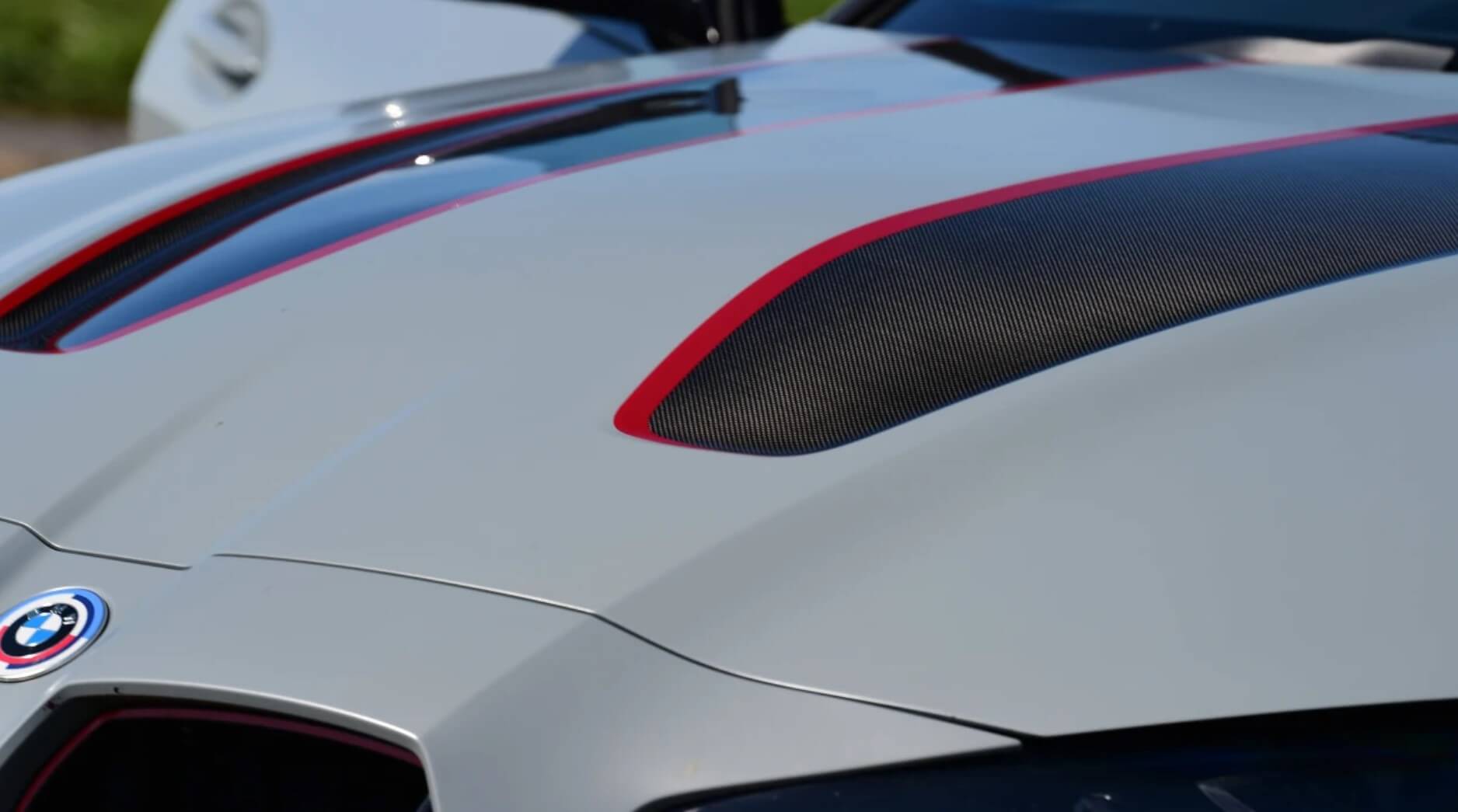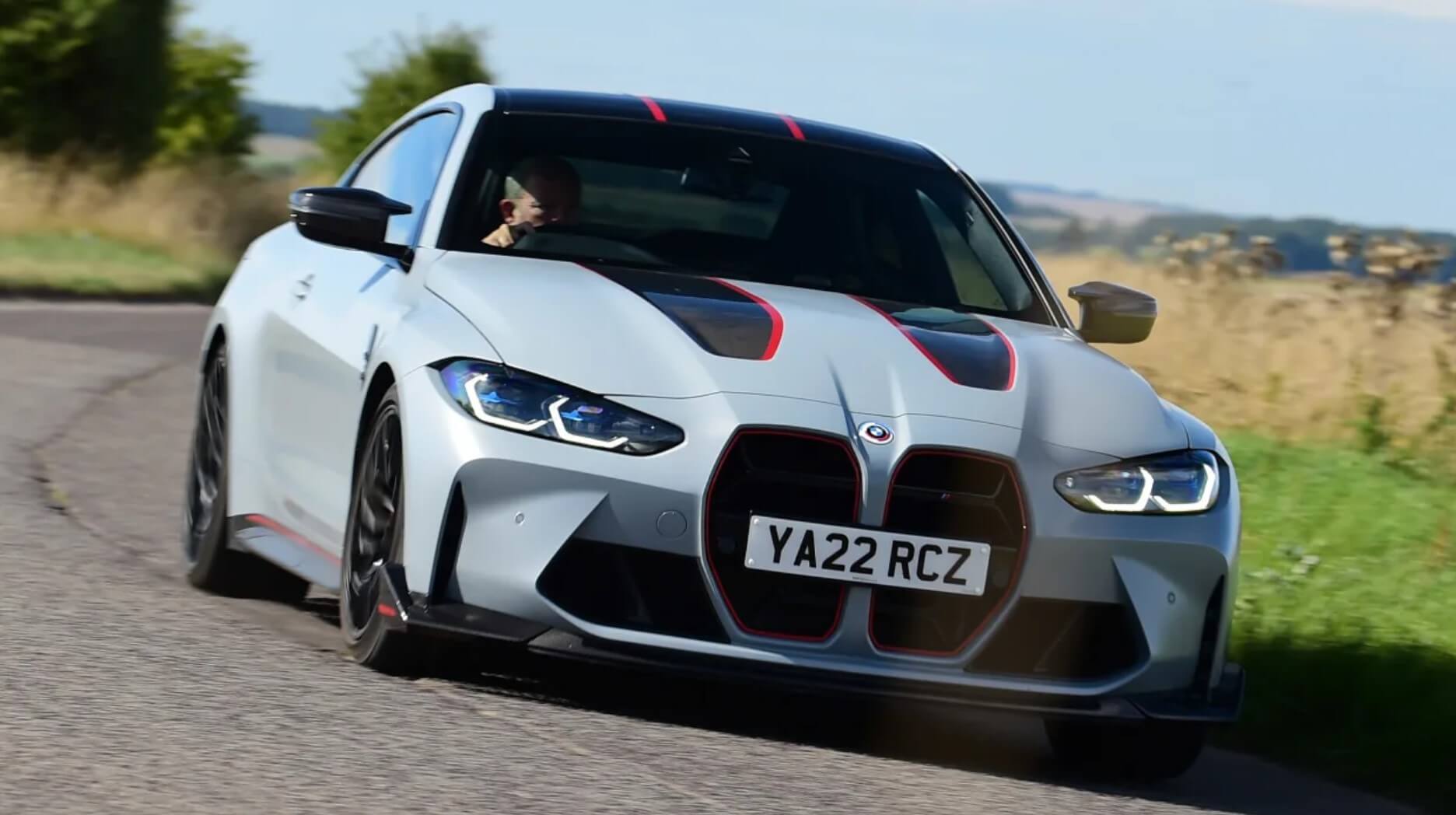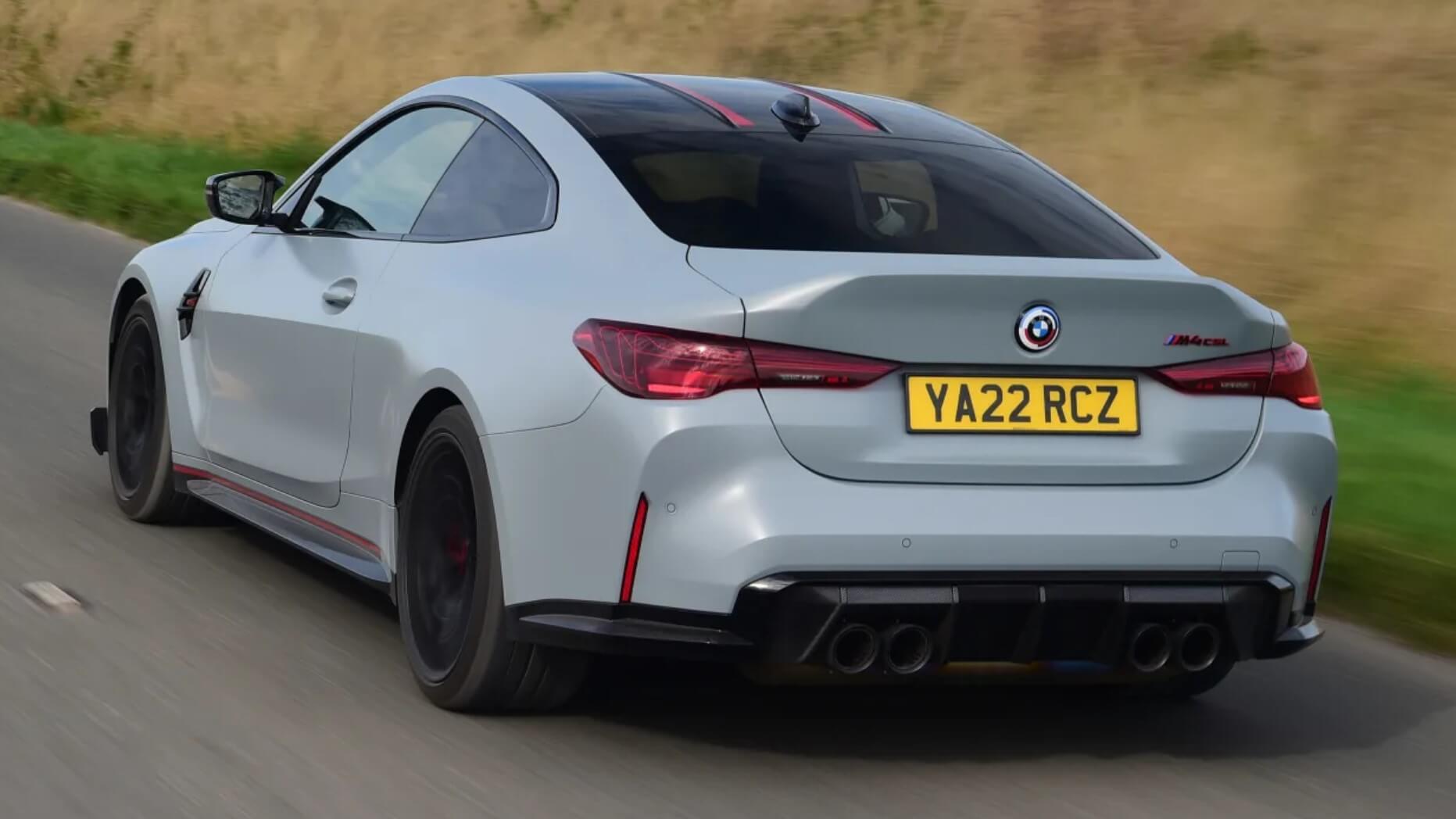Number One
The M badge has sat on the rump of some of Automotive Daily’s favourite-ever cars and it all started with the legendary M1.
ACROSS ONE LETTER and a handful of numbers, BMW’s M division has captured the thrill of driving for 50 years. From the legendary, mid-engined M1 to the brand new XM, M3 Touring and M4 CSL, Munich’s hot shop has woven a thread of dynamic greatness that strives to place the driver at the centre of the experience.
BMW’s M division was founded in 1972 to formalise the brand’s motorsport operation, much of which was built around various touring car championships, primarily in Germany and broader Europe. The mainstays of the M division’s early efforts were the 3.0 CSL and the 2002 Turbo. By the mid-1970s, the M division was looking farther afield both in terms of its racing and business opportunities.
There’s still some speculation as to whether the original intention for the M1 was as a pure race car, and the road car sprung from the need to homologate the model for the Group 4 category (400 road-going examples were required to be built), or whether the racing was merely a way to promote the car and M brand. By most accounts, the former appears to be the most accurate scenario.
The design of the M1 is credited to Giorgetto Giugiaro, but there were obviously influences from the 1972 BMW Turbo concept car that was penned by Paul Bracq. With no experience in developing or building mid-engined cars, BMW’s fledgling M division contracted Lamborghini (itself barely a dozen years old at the time) to engineer, prototype and produce the M1. Unfortunately, Lamborghini was lurching from one financial crisis to another and just seven M1 prototypes were completed before BMW got cold feet and took control of the project on April 20, 1978 – the M1 had been due in production during the second half of 1977.
The plan to salvage the M1 project was complex and involved the chassis being built by Marchese and the fibreglass body panels moulded by TIR. A small group of former Lamborghini employees set up Ital Engineering to continue the chassis development and eventual mating of the finished chassis and bodies. From Italy, the incomplete M1s were trucked to Stuttgart for Baur to install much of the BMW hardware and interior. Finally, the M1s were sent to Munich where BMW Motorsport finished the build and affixed their own build plate. This convoluted production process yielded just 453 M1s, built from late-1978 until December 1980. Of the total, up to 40 were built as race cars.
Despite the protracted development and production phase, the M1 road car was a masterpiece. Standing just 1138mm high, the M1 is 49mm lower than a Ferrari 296 GTB and just 68mm taller than a contemporary Lamborghini Countach. Under the rear decklid, the longitudinally mounted 3.5-litre M88/1 straight six featured dry-sump lubrication and Kugelfischer mechanical fuel injection with individual throttle bodies. A similar fuel-injection set-up was used by the 3.0 CSL race cars and Fiat 131 Abarth rally cars that dominated Group 4 rallying from 1978-80. Today, the M1’s maximum outputs of 204kW at 6500rpm and 330Nm at 5000rpm mightn’t raise the heart rate, but in 1978 the M1 was one of the world’s fastest cars. A kerb weight of just 1300kg helped the M1 achieve some startling acceleration figures – 0-100km/h in 5.9 seconds and the standing kilometre in 25.4 seconds. Top speed was 262km/h.
Unfortunately, the M1’s motorsport career was curtailed by the model’s difficult gestation and the Group 4 project never really got off the ground – there were some unsuccessful attempts at Watkins Glen in the United States and at Le Mans in France. Instead, the then head of BMW Motorsport, Jochen Neerpasch sold the idea of a Procar series to the Formula One Constructors Association.
BMW Motorsport ripped around 250kg out of the road-going M1’s 1300kg kerb weight and tuned the 3.5-litre engine to produce over 350kW (still naturally aspirated) at a screaming 9000rpm. Later turbocharged Group 4 variants reportedly made north of 630kW in qualifying trim, but 400-450kW was considered reliable for racing.
The Procar racing, in front of huge Formula One crowds on the greatest circuits in the world, was often spectacular, especially when Formula One-sized egos realised there was a championship and prize money on the line – each race lasted just 30 minutes and first place took $5000. The championship prize was an M1 road car. Austrian Niki Lauda won the 1979 championship, competing against the likes of Alan Jones, Teo Fabi, Mario Andretti, Emerson Fittipaldi, Nelson Piquet, Didier Pironi, James Hunt and Clay Regazzoni. Brazilian Nelson Piquet won the 1980 championship from Australia Alan Jones. The Procar championship wrapped up at the end of the 1980 season as did production of the road car.
The M1 may not have lived up to the expectation of BMW’s bean counters at the time, but today it’s recognised as the icon that it always was. It was BMW’s first mid-engined car – a configuration BMW stayed away from until the 2014 i8 – and launched the M brand onto the roads of the world.
To celebrate the 50th anniversary of BMW’s M division, we look back at some of the past masters, current heroes and future icons.
3’s A Crowd
With so many legendary models in the M3 pantheon, it’s difficult to play favourites, but the iconic E30 and E46 CSL make strong claims for the hearts of enthusiasts.
TODAY WE TAKE BMW’S M CARS almost for granted, but back in the mid-’80s the company’s motorsport division had put its initial on just three road-going models: the M1 supercar, the similarly engined M635CSi and the M535i. Yet while each of these cars intrigued and impressed, none of them would be talked about as much as the next road car to emerge from the M Division, the E30 M3.
Although designed primarily to take on BMW’s rivals on the race track, amongst them Mercedes-Benz’s rally car turned DTM racer, the Cosworth-powered 190E 2.3-16, the public would get to experience the M3 too, as the Group A rules of the time specified that 5000 road-legal examples of the car would have to be built in its first 12 months for it to be homologated for competition use.
The core of the M3 would be its engine, but rather than choosing a more powerful six-cylinder unit as a starting point, Paul Rosche, then technical director of BMW M GmbH, opted for a high-output four-cylinder, not only to save weight, but also because it would be able to rev higher (the six-cylinder engine’s crank suffered from vibrations sooner).
The new engine was based on the iron block from BMW’s production 2.0-litre four (which could trace its roots back to the BMW 1500 of the 1960s) but with a long-stroke crankshaft and an increased bore giving a larger capacity of 2302cc. Mated to this was a shortened version of the four-valves-per-cylinder head from the M1 and M635CSi, equipped with Bosch Motronic fuel injection. In final production form this would give 149kW at 6750rpm (145kW with the optional catalytic converter), with a rev limit of 7300rpm. In competition trim, 225kW and even higher revs would be attainable. Amazingly, the first prototype engine would take just 14 days to get up and running, hence the unit’s ‘S14’ designation.
The M3 would also get a Getrag five-speed gearbox complete with close ratios and a dog-leg first, while a limited-slip differential would help to get the power down. Handling was improved with uprated springs, new Boge dampers (an electronically adjustable set-up would later be an option), thicker anti-roll bars and an increased caster angle on the front suspension to improve stability and steering response. Behind new five-stud 15-inch BBS alloys were the stronger stub axles and wheel bearings from the 528i, plus upgraded brakes (280mm vented discs at the front, 282mm solid ones at the rear) with a Bosch ABS system.
While the M3 shared its basic shape with the stock E30, all the panels bar the bonnet and doors were different. The guards were flared to accommodate the larger wheels required for motorsport, the angle of the rear screen was reduced and a higher bootlid adopted to improve airflow to the new rear spoiler, while the front and rear bumpers were changed to match the new guards and provide further aerodynamic assistance. The result was a drag coefficient reduced from 0.38 to 0.30.
A prototype M3 was shown at the Frankfurt motor show in September 1985 and production started a year later, not at the M Division’s Garching factory but, because of the large number of cars that needed to be built in a short space of time, at BMW’s Munich-Milbertshofen plant.
By the time production ended in 1991, nearly 18,000 M3s had been built (including three small runs of different ‘Evolution’ versions, each created to homologate further modifications). Sublime on the road, the E30 M3 was a fierce competitor on the race track with numerous titles to its badge, including the 1987 Australian Touring Car Championship and the 1987 World Touring Car Championship. The Group A E30 M3 was also a handy rally car, a point underscored by its outright victory at the 1987 Tour de Corse. To this day, the E30 M3 remains the most successful touring car of all time.
JUST 1400 BMW M3 CSLs were made to cap the brilliance of the E46 M3 range. Underscoring the rarity of the CSL, 23 examples came to Australia and only 21 of which made it to public consumption. Aside from this, the original BMW press car, another CSL never left the dealership and still sits on the showroom floor in country NSW with fewer than 30km on the odometer.
This car never left BMW Australia’s possession and today is arguably the star of BMW’s small but perfectly formed Heritage Collection. The pixelated orange digits of this car’s odometer read just 12,332km. And of those kilometres, my three previous drives of this very CSL made up around 2000km. All three drives took place over a six-month period while I was working at Motor magazine. Firstly, we compared the CSL to Porsche’s 996 GT3 at Eastern Creek where, unbelievably, the BMW recorded a marginally faster lap time.
Then the CSL took on a Porsche 996 GT3 RS, Lotus Exige and Mitsubishi Lancer Evo 6.5 Makinen in a battle of the best road racers. In its final outing, the CSL finished second (by a single vote) to Lamborghini’s Gallardo at Motor’s 2004 Performance Car of the Year.
These near-20-year-old recollections certainly make me feel old, but there’s nothing old about the CSL’s specification. In fact, it was a trailblazer in 2003, and much of its spec is still boasted about today by other manufacturers. Carbonfibre was impossibly exotic in the early years of the new millennium and the CSL positively dripped with it. Centre console, door cards, front splitters, rear diffuser, airbox and roof were all made from carbonfibre. The roof saved 6kg by itself and contributed to a significant lowering of the centre of gravity. Other weight-saving measures included forged-alloy wheels, composite bootlid with integrated spoiler, and lightweight, non-reclining front seats. If you were really serious about weight loss, you could also ditch the aircon and radio. All up, the 1385kg CSL weighed in at 110kg less than the regular E46 M3.
In the regular E46, the 3.2-litre straight six remains a masterpiece, but CSL-spec transformed it into a crazily angry engine. The bald numbers (up 13kW and 5Nm over the M3) belied the latent fury of the engine, and it is still addictive to chase all 265kW at 7900rpm. With individual throttle butterflies, superbike-levels of inertia and a 90mm intake, the CSL’s response is from another era. Eighty-five per cent of peak torque is available at 2500rpm, yet it screams through the mid-range and hones in on 8000rpm with a serrated note that echoes and tumbles across the landscape.
Like the CSL’s use of carbonfibre, the fitment of track-biased Michelin Pilot Cup tyres was also pioneering, and BMW and its dealers provided stern warnings over their cold and wet-weather performance.
The CSL’s steering (it features a faster rack than that of the standard E46) is as much of a highlight as the razor-sharp engine. Though I’d love to try the CSL on new-generation Michelin Cup 2 rubber, I’m not convinced that the modern Pilot Sports fitted today are any less grippy than the original Cups that the CSL wore the last time I drove this car. There’s honest grip from both ends and you can flow the CSL through corners with a natural rhythm. The grip window is huge and approaching limits are telegraphed with a clarity that is sorely missing from many modern performance cars.
When the CSL is returned, a sense of regret washes over me. Not because I’m unlikely to again spring it from its Heritage Collection imprisonment, but because I know that we got the call wrong 18 years ago. The CSL should have beaten the Gallardo.
History Repeats
If the E30 M3 and E46 M3 CSL represent high-water marks in M history, the 1M and M2 CS are perhaps the greatest imitators of those legends and icons in their own right.
LAUNCHED IN 2011, the 1M still turns heads the best part of a decade later. The flared guards give the 1M a cartoonish stance that suggests a real sense of fun. And that sense of fun and character is backed up by what’s under the bonnet.
The 1M’s twin-turbo straight-six is a stonker. It’s almost utilitarian in the way that it delivers its huge 250kW punch, yet it still manages to have that classic BMW note – gritty yet aristocratic. It’s hard to believe just how fast the pint-sized 1M is until you experience it, but at times it’s almost unsettling. There’s no doubt this is mostly due to the 1M’s abundance of low and mid-range torque, which properly shoves this little coupe down the road. An overboost function provides an extra 50Nm for short bursts, peak torque climbing to 500Nm. That’s serious urge, especially in something this size – the definition of a big engine squeezed into a small car.
The 1M’s short wheelbase and lack of roll mean that it can feel quite a snappy car over the limit, but with the throttle set to Sport (the one and only setting you can change) you have the perfect tool to keep the rear wheels spinning just as much as you want – once sideways it seems to stabilise sweetly, albeit with a lot of tread being shed from the tyres. Fifty-fifty weight distribution and the M diff allow for hugely entertaining moments with the traction control switched off, but you do need to be quick with your reactions.
Every input to the short wheelbase from the road below or with the direct, meaty steering is met with an immediate reaction, so you are continually involved. A small bundle of excitable energy, if we were to call on a canine analogy, it’s terrier-like.
I THINK IT’S FAIR TO SAY THAT THE M2 has had a progressive rise to prominence in the minds of enthusiasts. At launch we were enamoured with this mini M-car, which combined a 272kW single-turbo N55 straight-six with a wickedly enhanced 2 Series coupe shell, effortlessly casting it as the spiritual successor to the deliciously pugnacious and rather frisky 1M of 2010.
Then the Competition spec arrived and far from being a slight tickle of the standard M2, this was really an all-new model, notably because under the bonnet arrived the potent and raucous twin-turbo S55 engine from the M4, slightly detuned to 302kW. Then there were welcome chassis upgrades for even more engagement.
Now, the M2 CS is the pinnacle of the small M models and very much a car in the mold of the E46 M3 CSL. The 331kW engine fires keenly, and settles to a close, hearty idle of the kind that only the best six-pot M engines seem to make. It’s the sort of engine where strictly unnecessary throttle blips during low-speed manoeuvring are almost impossible to resist, and thanks to a clutch pedal, easy to indulge.
It’s time to up the pace. The S55 presents its peak torque from 2350 to 5500rpm, a broad spread of Munich-nurtured muscle that makes exceedingly light work of the CS’s 1550kg.
This classic ‘little car, big engine’ feel is never more readily apparent than with the relationship between right foot and rear axle. The CS wants to oversteer, and it wants to oversteer now, in a moment or two, and for the next few seconds if you’ll let it. This is in the dry.
With its superb sense of balance and the instinctive behaviour of the M differential, the CS is never happier than when it’s moving around beneath you, painting lines on the road.
Yet, it’s more of a car than just that. There’s genuine clarity to the way it steers, to the way it flows down a road, convincing bite to the way the optional ceramic brakes haul it down from high speed.
This is a driver’s car – and specifically an M-car – as they used to be. Small, punchy, potent and reliant on skill and effort to get the best from it. The CS has an aura of something extra special.
Peak M5
BMW’s M5 has been the seminal sports sedan for four decades and the current M5 CS is the culmination of that greatness.
THE M5 CS IS THE MOST POWERFUL BMW Ever. Before the very limited run was snapped up, $274,900 bought you a supersedan with 467kW, 750Nm and the capability to hit 100km/h from rest in 3.0 seconds. It is also limited to 305km/h, a number we saw with ease on the autobahn.
It’s easy to get transfixed by the numbers. But you know what? They disappear like dandelions in a breeze when you’re holding on to the Alcantara-trimmed wheel and flicking the long ears of carbonfibre located behind it. Not that you need to, really. The M5 CS will flatten you into the seat from 3000rpm, so you could conceivably use only 5th and 6th gears for any of your favourite roads and still set a startling pace.
But you won’t. You’ll want to feel the V8 at full force, not just because the thrust is addictive but because of the effect it has on the chassis. The effect you have on the chassis. The M5 CS is ludicrously fast, it’s no featherweight and a carbonfibre bonnet and lightweight seats only work to emphasise the redundancy of a ‘track-focused’ sedan of this scale and heft. But there’s a magic about this car. The M5 CS is something truly precious. A supersedan with nuance as well as black-out performance, with playfulness to layer on top of its sheer cross-country speed. Oh, and charisma. Bucketloads of the stuff.
At speed it really is remarkably agile for a car of this size, but more than anything else it’s fully in thrall to your commands and seems to have multiple personalities, too. Initially you’ll drive it as you would any hugely powerful supersedan – circumspect on entry in deference to its size and the big engine up front, laying into the torque once you spot the apex and then indulging in the sense of the rear wheels locking you on line. Do that and the CS feels impregnable. Irresistible. It has that old supersedan ‘unstoppable force’ thing in abundance.
At low speeds the CS has a ride quality that’s just on the right side of acceptable even in Comfort mode, but immediately you sense more control than in the Competition and greater sophistication, particularly at the rear. Bumps that would trigger a rapid deployment of traction control in the Competition are absorbed with quiet calm, and as speeds rise the difference in composure only grows. I’m not going to say that the CS ever morphs into a Bentley Continental GT but the wheels trace the surface brilliantly, which in turn provides superb steering response, mid-corner tenacity and traction. This car delivers so much confidence.
The V8 is fantastically powerful and picks up hard from as little as 2000rpm. In cold, damp conditions this means that the CS will easily light up its rear tyres in, say, 5th gear from 3000rpm at 130+km/h. Even in the dry the rear tyres are in a losing battle way up towards motorway speeds. Amusing but ultimately distracting. So stick with 4WD Sport. Now you can attack.
The revelation comes quickly. You’ve been driving the CS like any other supersedan and enjoying its slow-in, fast-out approach. Maybe even with a little flourish of oversteer on exit. But soon you realise there are more options. Carry speed in. The front is accurate and faithful. Don’t wait. You can lean into the torque early and the CS will hold its line and haul onto the next straight with ferocious force. The acceleration never lets up and the ’box has such short ratios that every upshift barely seems to dent the dizzying rush.
The carbon-ceramics are maybe a shade too aggressive when they first bite, but there’s no question of fade, and this time I throw the CS at the apex as I might, say, a GR Yaris: fast steering input, off-throttle and right at the limit of what I think the front tyres will take. Another layer is peeled back. The CS locks cleanly onto line, the rear slips just a few degrees wide and the angle stabilises as the torque once again loads the rear wheels. Correction is simple and although there’s just a tiny hint of the AWD system’s work as the car straightens and snatches ever so slightly as it does, it’s a small price to pay for such confidence, stability and free and easy access to the wonderful balance this car possesses. The M5 CS doesn’t just tolerate being driven in such a combative style, it positively relishes it.
In truth, I’m more than a little awestruck by the M5 CS. It is, of course, absurdly fast, extremely expensive and yet it has character and a sense of purpose that’s rare. Moreover, it manages to feel special and alive on every journey. Never mind the fantasy three-car garage, the M5 CS makes a strong case that just the one will do.
Light Sabre
With the M division turning 50, it’s the perfect excuse to use the iconic CSL badge for only the third time in BMW’s storied history.
FERRARI HAS GTO. LAMBORGHINI HAS SVJ. BMW has CSL. Not even Porsche’s RS badge carries the rarity and weight of expectation of those three letters from Munich. Like Ferrari and Lamborghini, BMW only applies the CSL badge to the most special and focused cars. To celebrate 50 years of its M division, BMW has dusted off the CSL badge and affixed it to a hardcore interpretation of the current M4 coupe.
As with Ferrari’s GTO badge, this is just the third time that BMW has used the CSL nameplate. It debuted in 1973 on the 3.0 CSL and was put on ice until the E46 M3 CSL of 2003. It’s worth noting that BMW considers this new M4 CSL part of a lineage of ultra-high-performance coupes that includes the abovementioned CSLs and the 2016 M4 GTS.
With just 1000 units to be available globally – Australia will receive a very small allocation in the fourth quarter of this year – the new M4 CSL is rarer than the seminal E46 M3 CSL, of which 1400 were produced. Priced at $303,900, in Australia, the new CSL sits $138,400 above the rear-drive M4 Competition and $29,000 above the phenomenal BMW M5 CS. I can still recall the early internet outrage when BMW launched the E46 M3 CSL at $210,000, around $70K above the regular M3 coupe.
You’re looking at the fastest BMW yet. On a number of parameters, too. Which is something of a relief, because the M4 CSL has a lot to live up to. The Coupe, Sport, Lightweight lineage makes sporadic, infrequent appearances, perhaps putting all the more pressure on the spec sheet of each car deemed worthy of the badge.
Luckily, the M4 CSL’s doesn’t disappoint, and its headline figure is a neat 100kg – a figure that M boss Frank van Meel says is the minimum weight reduction required to qualify for CSL certification. That’s how much weight has been scalloped out of the M4 Competition that provides its base.
The rear seats have gone – accounting for a fifth of the weight loss – while the incredible new carbon buckets up front save another 12kg apiece. Numerous BMW representatives took great pleasure in telling us that the seats are only adjustable if you get out the tools – the implication being that owners will not be relinquishing the driver’s seat. If you’re worried your own construction isn’t quite CSL enough to fit comfortably, you can option the M4’s regular buckets back in, complete with their heating elements, electric controls and lumbar adjustment, three things the CSL’s bespoke items do happily without.
Everywhere you look, the interior exudes focus. The centre console is now made of carbonfibre-reinforced plastic (CFRP), the steering wheel rim is wrapped entirely in Alcantara and some of the regular car’s tech has been thinned down.
Carbon-ceramic brakes are standard, cutting another 14.3kg despite their behemoth size (400mm discs up front, 380 at the rear) while CFRP makes plentiful appearances across the bodywork, with the bonnet, boot lid, rear diffuser and side sills made of the stuff, in addition to the roof, as per all M4 Coupes. Those stripes running through this car’s Frozen Brooklyn Grey paintwork (black and white are also optional) are unpainted carbon, complemented by red piping to ensure you that don’t miss them.
Though chances are you’re more transfixed on its yellow ‘Laserlights’, designed to ape the M4 GT3 racecar – from which a fair bit of the CSL’s knowhow has been inherited – and nearly matched for drama by the intricate threaded pattern of the taillights.
Lightweighting out of the way, I’m sure that you’ll be gagging for some performance stats. ‘Fastest BMW ever’ means 0-100km/h in 3.7 seconds, 0-200km/h in 10.7sec (yes, seven-flat from 100-200) and a top speed of 305km/h (still electronically limited). It’s clocked a Nürburgring lap time of 7:15.677 on the traditional 20.6km Nordschleife layout or 7:20.207 if you’re a stickler for the officially ’Ring-recognised 20.8km. Either way, this is comfortably the quickest BMW around the Green Hell; it’s over half a minute quicker than its E46 forebear.
And it’s not just got there via a gruelling diet. The powertrain has had a thorough going over, too, with an uprated eight-speed automatic transmission and its 3.0-litre twin-turbo six tweaked for more power, though not dramatically so. Higher boost pressure ups peak output by 30kW, now 405kW at the same 6250rpm, while torque hasn’t altered, still 650Nm from as little as 2750rpm (and sustained to 5950rpm). It remains rear-wheel drive, benefiting both purity and the overall weight figure.
While the engine doesn’t appear to have enjoyed a transformation, its cooling systems have improved, assisted by larger openings in the apron and remote coolers within the front wheel arches. Farther back, a titanium exhaust silencer primarily saves a few more kilos (4.3, to be precise) but also brings – in BMW’s words – ‘an intense racing aura’ to proceedings.
Then there are the chassis tweaks. The more aggressively cambered wheels are bespoke forged alloys, staggered 19-inch front/20-inch rear and wrapped as standard in Michelin Pilot Sport Cup 2 R tyres. If you want to hack about in your CSL all year long, you can also have the M4’s stock – and still brilliant – Pilot Sport 4Ss as an option.
The M4’s adaptive damping remains standard-fit, but the suspension has been dropped 8mm for the CSL. In addition to the front camber adjustment, additional ball joints on the rear axle take the place of rubber mountings for more precise control while the more extreme half of the M4’s famed 10-stage traction control has renewed focus.
Quite a package overall, then, and a very exciting cherry atop M’s big 50th birthday cake.
Future Focus
With a half century on the board, BMW M looks toward the future with a new-gen M2, a very limited-run special anniversary model and the XM, only the second standalone M model in 50 years.
YOU MIGHT THINK that the return of the CSL badge would be enough to mark the 50th anniversary of BMW’s M division, but with the M3 Touring, upcoming new-gen M2 and incredible XM, the brand’s engineers have been kept truly busy. Then there’s the very limited-edition anniversary model that has only been teased once.
The XM joins the pioneering M1 as the only standalone models in M’s 50-year history. Additionally, the XM is the first M product to feature a plug-in hybrid powertrain – in this case a twin-turbocharged 4.4-litre V8 married to a 27.5kWh lithium-ion battery pack (with a useable capacity of 25.7kWh) and a single electric motor that is integrated into the eight-speed M Steptronic automatic gearbox. The new XM shares its drivetrain concept with BMW’s upcoming M Hybrid V8 endurance racer that will take on the IMSA Sportscar Championship in North America from 2023, and the FIA World Endurance Championship and the 24 Hours of Le Mans from 2024.
The familiar but thoroughly reworked and refined 4.4-litre twin-turbo V8 now wears the engine code S68. Here it makes 360kW and 650Nm, and is augmented by the 145kW, 280Nm electric motor. Total system outputs are 480kW and 800Nm. As outrageous as these numbers appear, the XM Label Red edition will bring total outputs of 550kW and 1000Nm, making it the most powerful model to wear a BMW M badge.
The rear-biased all-wheel-drive XM storms to 100km/h from rest in just 4.3 seconds and on to a top speed of up to 270km/h. In electric mode (accessed via the M Hybrid button on the centre console), the XM can travel at speeds of up to 140km/h and for a distance of up to 82-88km (according to the WLTP testing). When in electric mode, the XM is accompanied by a stirring soundtrack from the IconicSounds Electric system and scored by composer Hans Zimmer.
The XM charges via BMW’s Combined Charging Unit at up to 7.4kW on AC.
The body of the XM is big and bold, befitting such a statement model. While the overall proportions are in keeping with a contemporary Sports Activity Vehicle, the XM features both outrageously modern design touches and subtle hat tips to the M division’s heritage. The oversized kidney grilles, split-level lighting treatment and powerful wheelarches are bold and daring, while the twin BMW roundels engraved in the top edges of the rear glass reference the pair of badges that adorned the M1 of 1978. The XM will be offered as standard on 22-inch alloys, but we suspect that the optional and enormous 23-inch wheels (wrapped in 275/45 front, and 315/40 rear Michelin tyres) pictured will be a popular choice.
Production of the XM will commence in December this year and the XM will arrive into Australian showrooms in the first half of 2023 at a price of $297,900 plus on-road costs. Further details on the Label Red model will be released in 2023 ahead of an expected arrival later in the year.


